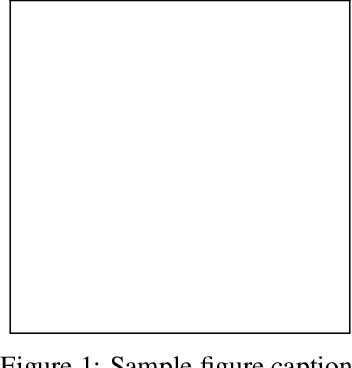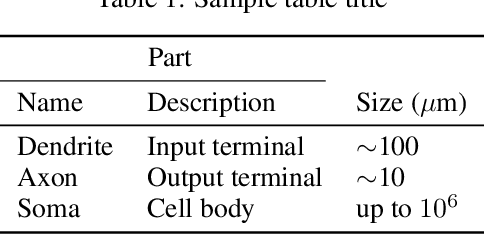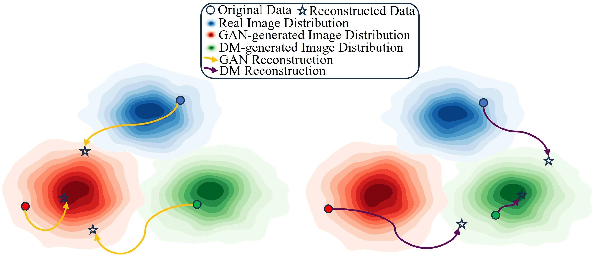Ning Chen
RoboOS-NeXT: A Unified Memory-based Framework for Lifelong, Scalable, and Robust Multi-Robot Collaboration
Oct 30, 2025Abstract:The proliferation of collaborative robots across diverse tasks and embodiments presents a central challenge: achieving lifelong adaptability, scalable coordination, and robust scheduling in multi-agent systems. Existing approaches, from vision-language-action (VLA) models to hierarchical frameworks, fall short due to their reliance on limited or dividual-agent memory. This fundamentally constrains their ability to learn over long horizons, scale to heterogeneous teams, or recover from failures, highlighting the need for a unified memory representation. To address these limitations, we introduce RoboOS-NeXT, a unified memory-based framework for lifelong, scalable, and robust multi-robot collaboration. At the core of RoboOS-NeXT is the novel Spatio-Temporal-Embodiment Memory (STEM), which integrates spatial scene geometry, temporal event history, and embodiment profiles into a shared representation. This memory-centric design is integrated into a brain-cerebellum framework, where a high-level brain model performs global planning by retrieving and updating STEM, while low-level controllers execute actions locally. This closed loop between cognition, memory, and execution enables dynamic task allocation, fault-tolerant collaboration, and consistent state synchronization. We conduct extensive experiments spanning complex coordination tasks in restaurants, supermarkets, and households. Our results demonstrate that RoboOS-NeXT achieves superior performance across heterogeneous embodiments, validating its effectiveness in enabling lifelong, scalable, and robust multi-robot collaboration. Project website: https://flagopen.github.io/RoboOS/
Survey of Multimodal Geospatial Foundation Models: Techniques, Applications, and Challenges
Oct 27, 2025Abstract:Foundation models have transformed natural language processing and computer vision, and their impact is now reshaping remote sensing image analysis. With powerful generalization and transfer learning capabilities, they align naturally with the multimodal, multi-resolution, and multi-temporal characteristics of remote sensing data. To address unique challenges in the field, multimodal geospatial foundation models (GFMs) have emerged as a dedicated research frontier. This survey delivers a comprehensive review of multimodal GFMs from a modality-driven perspective, covering five core visual and vision-language modalities. We examine how differences in imaging physics and data representation shape interaction design, and we analyze key techniques for alignment, integration, and knowledge transfer to tackle modality heterogeneity, distribution shifts, and semantic gaps. Advances in training paradigms, architectures, and task-specific adaptation strategies are systematically assessed alongside a wealth of emerging benchmarks. Representative multimodal visual and vision-language GFMs are evaluated across ten downstream tasks, with insights into their architectures, performance, and application scenarios. Real-world case studies, spanning land cover mapping, agricultural monitoring, disaster response, climate studies, and geospatial intelligence, demonstrate the practical potential of GFMs. Finally, we outline pressing challenges in domain generalization, interpretability, efficiency, and privacy, and chart promising avenues for future research.
Beyond Distribution Shifts: Adaptive Hyperspectral Image Classification at Test Time
Sep 10, 2025Abstract:Hyperspectral image (HSI) classification models are highly sensitive to distribution shifts caused by various real-world degradations such as noise, blur, compression, and atmospheric effects. To address this challenge, we propose HyperTTA, a unified framework designed to enhance model robustness under diverse degradation conditions. Specifically, we first construct a multi-degradation hyperspectral dataset that systematically simulates nine representative types of degradations, providing a comprehensive benchmark for robust classification evaluation. Based on this, we design a spectral-spatial transformer classifier (SSTC) enhanced with a multi-level receptive field mechanism and label smoothing regularization to jointly capture multi-scale spatial context and improve generalization. Furthermore, HyperTTA incorporates a lightweight test-time adaptation (TTA) strategy, the confidence-aware entropy-minimized LayerNorm adapter (CELA), which updates only the affine parameters of LayerNorm layers by minimizing prediction entropy on high-confidence unlabeled target samples. This confidence-aware adaptation prevents unreliable updates from noisy predictions, enabling robust and dynamic adaptation without access to source data or target annotations. Extensive experiments on two benchmark datasets demonstrate that HyperTTA outperforms existing baselines across a wide range of degradation scenarios, validating the effectiveness of both its classification backbone and the proposed TTA scheme. Code will be made available publicly.
SpikePingpong: High-Frequency Spike Vision-based Robot Learning for Precise Striking in Table Tennis Game
Jun 07, 2025

Abstract:Learning to control high-speed objects in the real world remains a challenging frontier in robotics. Table tennis serves as an ideal testbed for this problem, demanding both rapid interception of fast-moving balls and precise adjustment of their trajectories. This task presents two fundamental challenges: it requires a high-precision vision system capable of accurately predicting ball trajectories, and it necessitates intelligent strategic planning to ensure precise ball placement to target regions. The dynamic nature of table tennis, coupled with its real-time response requirements, makes it particularly well-suited for advancing robotic control capabilities in fast-paced, precision-critical domains. In this paper, we present SpikePingpong, a novel system that integrates spike-based vision with imitation learning for high-precision robotic table tennis. Our approach introduces two key attempts that directly address the aforementioned challenges: SONIC, a spike camera-based module that achieves millimeter-level precision in ball-racket contact prediction by compensating for real-world uncertainties such as air resistance and friction; and IMPACT, a strategic planning module that enables accurate ball placement to targeted table regions. The system harnesses a 20 kHz spike camera for high-temporal resolution ball tracking, combined with efficient neural network models for real-time trajectory correction and stroke planning. Experimental results demonstrate that SpikePingpong achieves a remarkable 91% success rate for 30 cm accuracy target area and 71% in the more challenging 20 cm accuracy task, surpassing previous state-of-the-art approaches by 38% and 37% respectively. These significant performance improvements enable the robust implementation of sophisticated tactical gameplay strategies, providing a new research perspective for robotic control in high-speed dynamic tasks.
Improving Ad matching via Cluster-Adaptive Keyword Expansion and Relevance tuning
May 24, 2025



Abstract:In search advertising, keyword matching connects user queries with relevant ads. While token-based matching increases ad coverage, it can reduce relevance due to overly permissive semantic expansion. This work extends keyword reach through document-side semantic keyword expansion, using a language model to broaden token-level matching without altering queries. We propose a solution using a pre-trained siamese model to generate dense vector representations of ad keywords and identify semantically related variants through nearest neighbor search. To maintain precision, we introduce a cluster-based thresholding mechanism that adjusts similarity cutoffs based on local semantic density. Each expanded keyword maps to a group of seller-listed items, which may only partially align with the original intent. To ensure relevance, we enhance the downstream relevance model by adapting it to the expanded keyword space using an incremental learning strategy with a lightweight decision tree ensemble. This system improves both relevance and click-through rate (CTR), offering a scalable, low-latency solution adaptable to evolving query behavior and advertising inventory.
Model Discrepancy Learning: Synthetic Faces Detection Based on Multi-Reconstruction
Apr 10, 2025



Abstract:Advances in image generation enable hyper-realistic synthetic faces but also pose risks, thus making synthetic face detection crucial. Previous research focuses on the general differences between generated images and real images, often overlooking the discrepancies among various generative techniques. In this paper, we explore the intrinsic relationship between synthetic images and their corresponding generation technologies. We find that specific images exhibit significant reconstruction discrepancies across different generative methods and that matching generation techniques provide more accurate reconstructions. Based on this insight, we propose a Multi-Reconstruction-based detector. By reversing and reconstructing images using multiple generative models, we analyze the reconstruction differences among real, GAN-generated, and DM-generated images to facilitate effective differentiation. Additionally, we introduce the Asian Synthetic Face Dataset (ASFD), containing synthetic Asian faces generated with various GANs and DMs. This dataset complements existing synthetic face datasets. Experimental results demonstrate that our detector achieves exceptional performance, with strong generalization and robustness.
Privacy-Aware Joint DNN Model Deployment and Partition Optimization for Delay-Efficient Collaborative Edge Inference
Feb 22, 2025



Abstract:Edge inference (EI) is a key solution to address the growing challenges of delayed response times, limited scalability, and privacy concerns in cloud-based Deep Neural Network (DNN) inference. However, deploying DNN models on resource-constrained edge devices faces more severe challenges, such as model storage limitations, dynamic service requests, and privacy risks. This paper proposes a novel framework for privacy-aware joint DNN model deployment and partition optimization to minimize long-term average inference delay under resource and privacy constraints. Specifically, the problem is formulated as a complex optimization problem considering model deployment, user-server association, and model partition strategies. To handle the NP-hardness and future uncertainties, a Lyapunov-based approach is introduced to transform the long-term optimization into a single-time-slot problem, ensuring system performance. Additionally, a coalition formation game model is proposed for edge server association, and a greedy-based algorithm is developed for model deployment within each coalition to efficiently solve the problem. Extensive simulations show that the proposed algorithms effectively reduce inference delay while satisfying privacy constraints, outperforming baseline approaches in various scenarios.
CordViP: Correspondence-based Visuomotor Policy for Dexterous Manipulation in Real-World
Feb 12, 2025Abstract:Achieving human-level dexterity in robots is a key objective in the field of robotic manipulation. Recent advancements in 3D-based imitation learning have shown promising results, providing an effective pathway to achieve this goal. However, obtaining high-quality 3D representations presents two key problems: (1) the quality of point clouds captured by a single-view camera is significantly affected by factors such as camera resolution, positioning, and occlusions caused by the dexterous hand; (2) the global point clouds lack crucial contact information and spatial correspondences, which are necessary for fine-grained dexterous manipulation tasks. To eliminate these limitations, we propose CordViP, a novel framework that constructs and learns correspondences by leveraging the robust 6D pose estimation of objects and robot proprioception. Specifically, we first introduce the interaction-aware point clouds, which establish correspondences between the object and the hand. These point clouds are then used for our pre-training policy, where we also incorporate object-centric contact maps and hand-arm coordination information, effectively capturing both spatial and temporal dynamics. Our method demonstrates exceptional dexterous manipulation capabilities with an average success rate of 90\% in four real-world tasks, surpassing other baselines by a large margin. Experimental results also highlight the superior generalization and robustness of CordViP to different objects, viewpoints, and scenarios. Code and videos are available on https://aureleopku.github.io/CordViP.
Compressing Model with Few Class-Imbalance Samples: An Out-of-Distribution Expedition
Feb 09, 2025



Abstract:In recent years, as a compromise between privacy and performance, few-sample model compression has been widely adopted to deal with limited data resulting from privacy and security concerns. However, when the number of available samples is extremely limited, class imbalance becomes a common and tricky problem. Achieving an equal number of samples across all classes is often costly and impractical in real-world applications, and previous studies on few-sample model compression have mostly ignored this significant issue. Our experiments comprehensively demonstrate that class imbalance negatively affects the overall performance of few-sample model compression methods. To address this problem, we propose a novel and adaptive framework named OOD-Enhanced Few-Sample Model Compression (OE-FSMC). This framework integrates easily accessible out-of-distribution (OOD) data into both the compression and fine-tuning processes, effectively rebalancing the training distribution. We also incorporate a joint distillation loss and a regularization term to reduce the risk of the model overfitting to the OOD data. Extensive experiments on multiple benchmark datasets show that our framework can be seamlessly incorporated into existing few-sample model compression methods, effectively mitigating the accuracy degradation caused by class imbalance.
Improving Multi-Label Contrastive Learning by Leveraging Label Distribution
Jan 31, 2025



Abstract:In multi-label learning, leveraging contrastive learning to learn better representations faces a key challenge: selecting positive and negative samples and effectively utilizing label information. Previous studies selected positive and negative samples based on the overlap between labels and used them for label-wise loss balancing. However, these methods suffer from a complex selection process and fail to account for the varying importance of different labels. To address these problems, we propose a novel method that improves multi-label contrastive learning through label distribution. Specifically, when selecting positive and negative samples, we only need to consider whether there is an intersection between labels. To model the relationships between labels, we introduce two methods to recover label distributions from logical labels, based on Radial Basis Function (RBF) and contrastive loss, respectively. We evaluate our method on nine widely used multi-label datasets, including image and vector datasets. The results demonstrate that our method outperforms state-of-the-art methods in six evaluation metrics.
 Add to Chrome
Add to Chrome Add to Firefox
Add to Firefox Add to Edge
Add to Edge